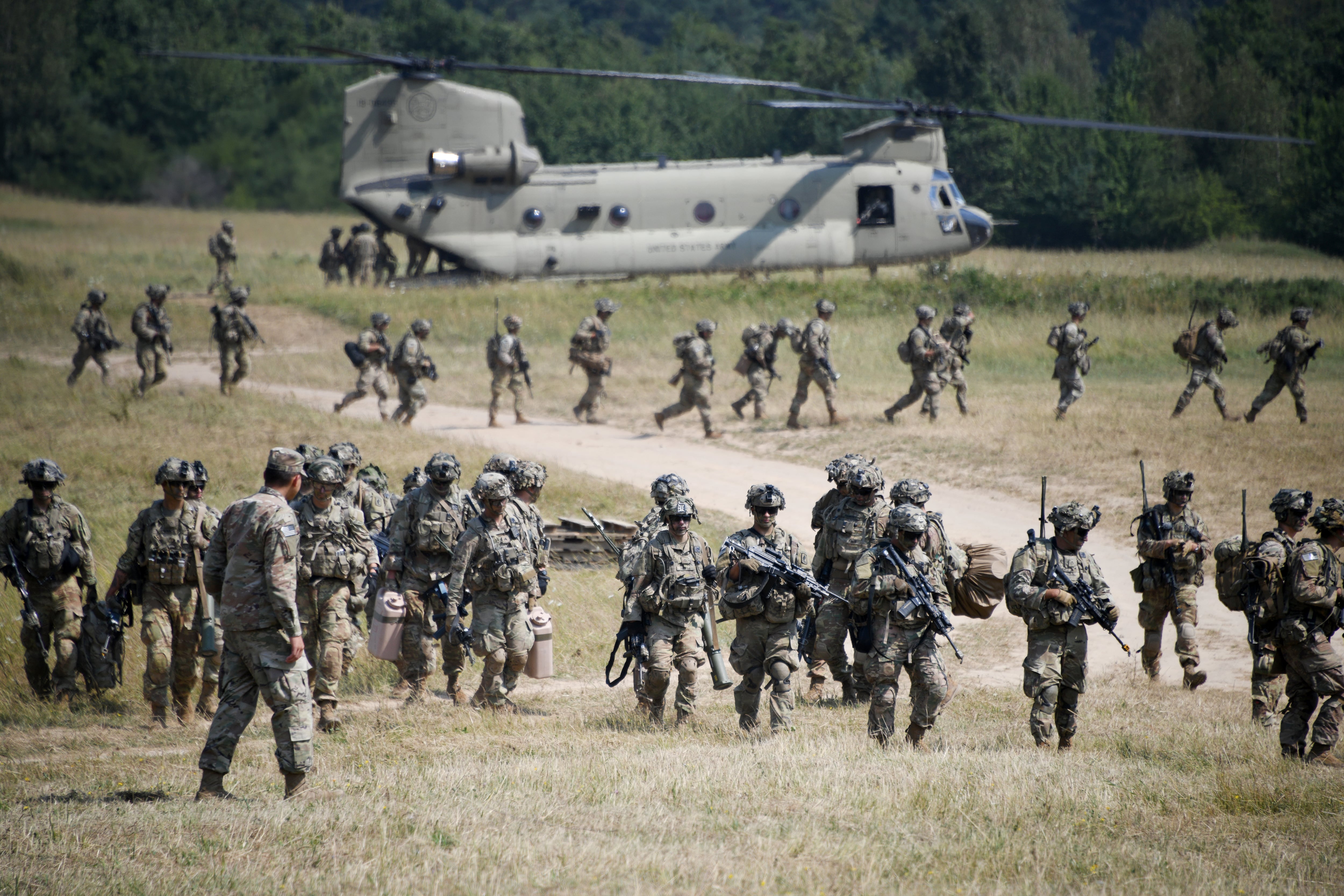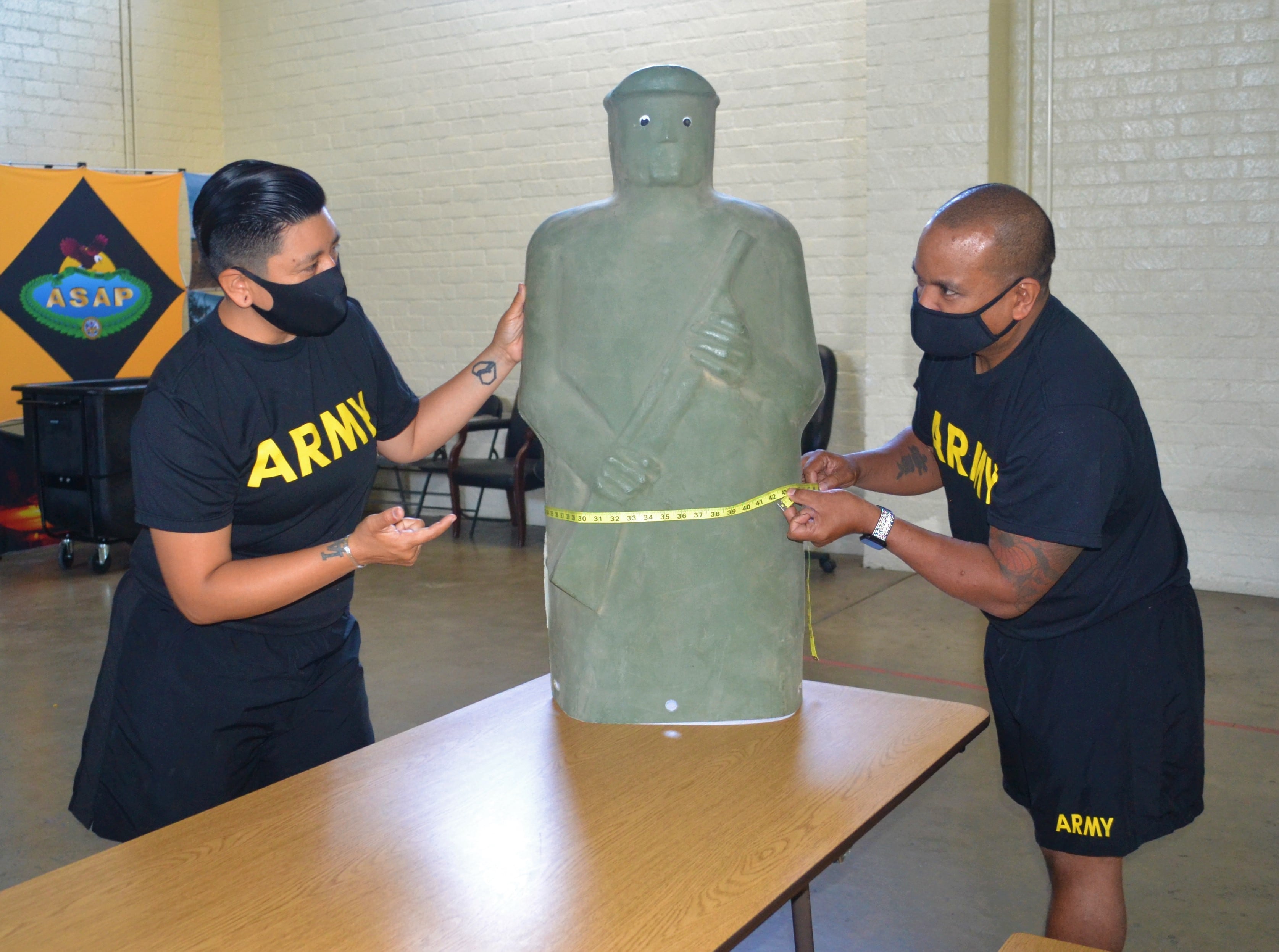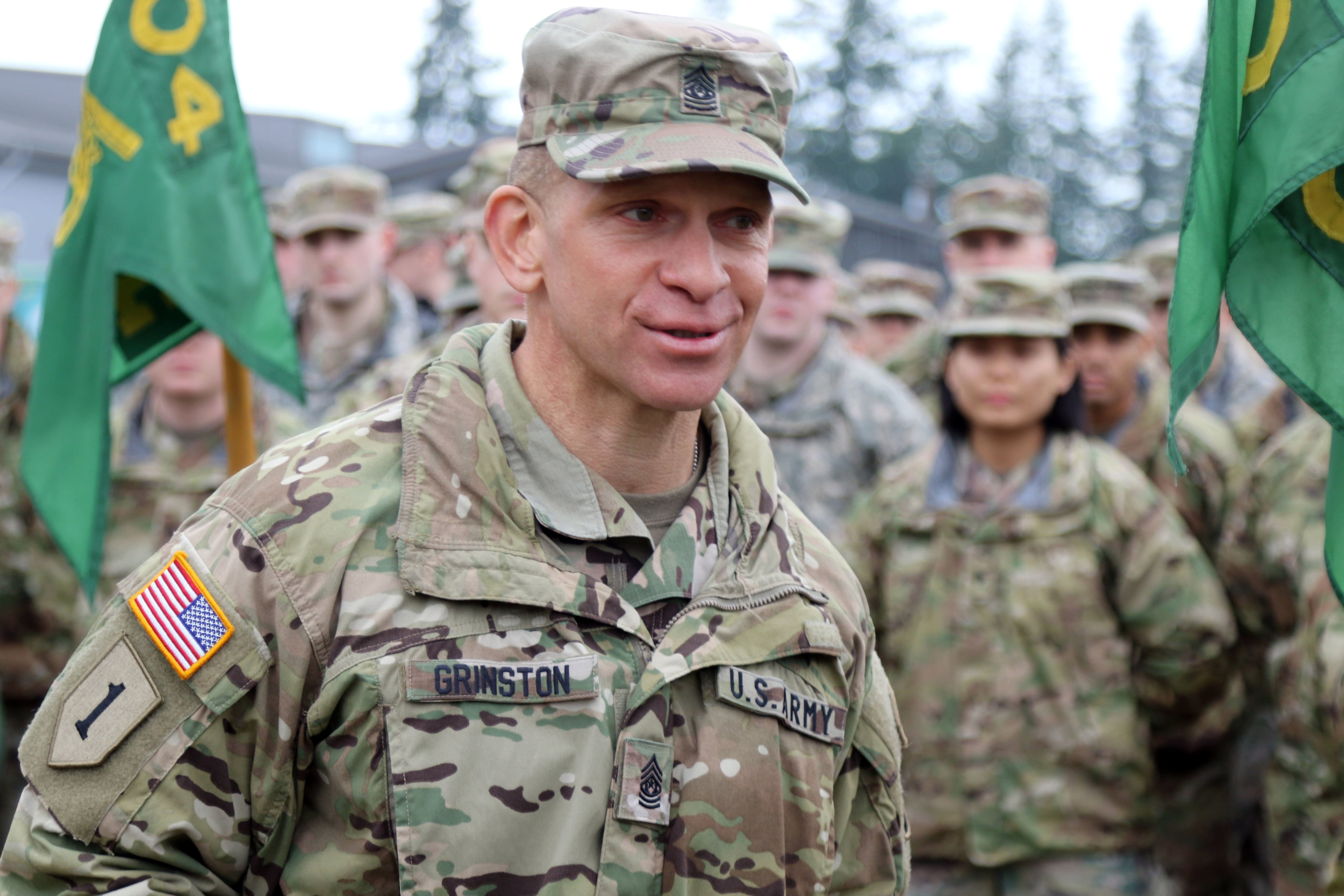The Army is facing several challenges, and opportunities, for the enlisted force in the coming year. How the service handles its new Army Combat Fitness Test, a body composition study, noncommissioned officer development and talent management initiatives will be placed in the spotlight in just the coming months.
Ahead of the Association of the U.S. Army’s annual conference, Sergeant Major of the Army Michael Grinston sat down with Army Times to discuss those signature initiatives and more as he prepares for 2022.
This interview was edited for length and clarity.
Looking back at the past year, what are you most proud of?
We’ve done some really unique things with talent management. One of those things that we got through was the corporal initiative.
Initially, I just talked about first sergeants and brigade command sergeant major talent assessment. But in all reality, we’re trying to build the foundation.
In the past, you just graduated Basic Leader’s Course and you’re waiting to be promoted to sergeant. Now, we make them corporals — that shows a visible sign that you’re prepared to be a noncommissioned officer and gives you a few reps before you make sergeant. I’m really proud of that.
The second is we’re really trying to get staff sergeants back in their units.
RELATED

Now, they’re doing exactly what the Army asked them to do. But we found that we’ve taken a lot of staff sergeants to be recruiters — more than what was already authorized. So we’re bringing 1,000 NCOs back into the operational force. In order to have a really good squad, you probably need a squad leader.
The third thing — and most people may not like what I did — is we increased the minimum time in grade for staff sergeants to promote to sergeant first class. We went from 18 months to 36 months so that staff sergeants will have to be present and remain grounded in their fundamental tasks.
We wanted to make sure we didn’t move them out too quickly. We want them to be a good squad leader and still have time to be a drill sergeant or go be a recruiter.
Which of your recent initiatives still needs attention?
I don’t think I’m going to spike the ball on talent management quite yet. We need some time to make sure that those first sergeants who went through the 1SG Talent Alignment Assessment pilot are better.
Are the sergeants major [who were screened via the CSM assessment pilot program] better? We’re not going to know for another year or two, so that needs some attention.
What’s going to be your biggest initiative next year?
The biggest thing I’ve got in the next year is the “Solution Summit.” This monthly summit brings in all of the Army’s CSMs who have senior mission command authority. We’ve done two of these meetings since June.
For these meetings, everybody got an assignment, and we gave them hard problems: I want zero sexual assaults; I want zero suicides; I want zero racism and extremism.
How do we get to that? Those are the three main focuses that we have. [The sergeants major] come in, we meet, and we talk about how we are we getting after prevention.
And it’s not a “gotcha.” It’s about “Oh, I’m doing this thing well.” And if [the idea] is really good, do I take it on as SMA? And do I implement it throughout the Army?
I’m fascinated you said this isn’t a “gotcha” thing. Some readers might argue that while numbers accountability culture has its benefits, it can provide an incentive to look for spin rather than solutions. Tell me more about your decision to ensure this isn’t a “gotcha” meeting.
The decision came from “Upstream” by Dan Heath. We brought him in and he gave us a wonderful presentation.
He said: “When you look at numbers, there’s two ways to look at them: There’s compliance, and then there’s commitment.”
In the Army, I’ll admit, there are instances where [personnel aim] for compliance — “The Army told you to do this, so OK, let’s do it.” And then there’s other times that we want commitment, and the data helps us learn how to do better.
One example is sponsorship. It could be a product of going “red” to “green” in the Army Career Tracker. I put a sponsor on the DA Form 5434 sponsorship counseling form, and I submit that, and then my chart goes from red to green.
But does that mean we’re integrating our soldiers appropriately into units? No.
A lot of times in the past, we’ll take that chart and if it goes from red to green, we slapped the table and said: “We don’t need to talk about it.”
The Solution Summit is designed to say: “Yeah, the slide may be green, but I still didn’t get to my aim point.”
Say I got the sponsorship chart from red to green. What did we learn and how can we really integrate our soldiers so they feel like they are a valued member of a team? And that’s what is so important about this summit — the data may be driving us to some compliance, but that data is primarily to inform us to dig in and see what we need to do further.
The Army Research Institute of Environmental Medicine will conduct a study reevaluating the service’s body composition program this fall. Where does that stand, and when could we see a change to the way the Army looks at soldiers’ body compositions?
The study will kick off on Oct. 18 at Fort Bragg, North Carolina. That’s going to be data- and science-informed. The U.S. Army Research Institute of Environmental Medicine did the last body composition review in 2001.
What I want to get out of this study is information. Do we have the [body composition program] right? I don’t know. It’s going to be an informed decision.
I can be honest — I initially wasn’t understanding the question people were asking me when they talked to me about body composition. All I heard in the beginning was: “Can we get bigger?”
But what we’re really trying to look at is if we have the height and weight correct.
If I’m a 5-foot-3-inch soldier and I have to weigh less than 141 pounds, is that correct? That’s what we’re trying to do.
RELATED

I don’t think there’s any appetite to say: “Hey, we want the Army to carry more body fat.” But what are those height and weight tables? Do we have the metrics right? Is the tape test still a valid test?
Their initial brief to me several months ago said that the tape test is actually pretty good. It’s actually more lenient than a BodPod, but that’s all going to come out with the study.
I’m not sure we’ll have a finished product on the body composition by this year. We might have all the information for us to make an informed decision. I’m guessing maybe December, January time frame because it takes time for them to compile it. I would say at the earliest, the beginning of next year, for [potential changes] at the end of the year, if we need to change something.
I wouldn’t use the SMA’s data. Let’s use the scientist’s data and see what they say.
The Army Combat Fitness Test is tentatively slated to go live, pending independent review, on April 1, 2022. Is that on track?
Last year’s National Defense Authorization Act said we need to do an independent review of the ACFT. We’ve already done one independent review. It was done by the University of Iowa. Now [the think tank] Rand is doing another one. We got the initial findings in May, and the second findings were in August, and we’re looking forward to a final report in December.
But either way, we’re going to have a record fitness test on April 1, 2022. And I’m still hopeful that will be the Army Combat Fitness Test. We may have some version of that — I’m not sure — but all indications are that we can do this.
The other day, somebody challenged me and said: “SMA, no women will score 600 on your ACFT!”
That’s not true. There’s been five women who have already scored 600 on the ACFT, and one who scored a 599. I’m extremely confident that on April 1, we will have a test for record, and I am hopeful it will be the ACFT.
What else should readers know about?
When I say “fit,” most people hear “physical fitness.” But how do we routinely practice good mental health? What are those positive thoughts?
And every time I say it, people will go: “Oh, yeah — master resiliency course, ‘hunt the good stuff.’”
OK, but do we practice that on a daily basis? Do we work on our total fitness and not just physical fitness?
Everybody works on physical fitness every day. What we’re looking at is what are those things that we can do at the end of the PT session to think of positive things. So we practice this whole fitness where it’s just not physical fitness but also mental fitness.
You don’t expect to do great on the ACFT if you don’t practice for it all year. It’s the same concept for mental health — how do we practice our mental fitness routinely?
So we’re looking at some things on that in the future.
Davis Winkie covers the Army for Military Times. He studied history at Vanderbilt and UNC-Chapel Hill, and served five years in the Army Guard. His investigations earned the Society of Professional Journalists' 2023 Sunshine Award and consecutive Military Reporters and Editors honors, among others. Davis was also a 2022 Livingston Awards finalist.




